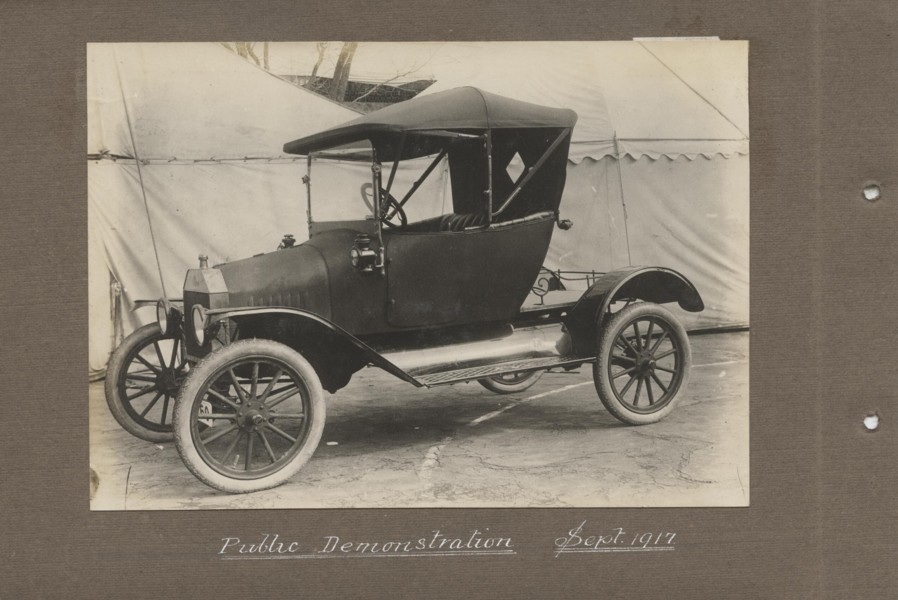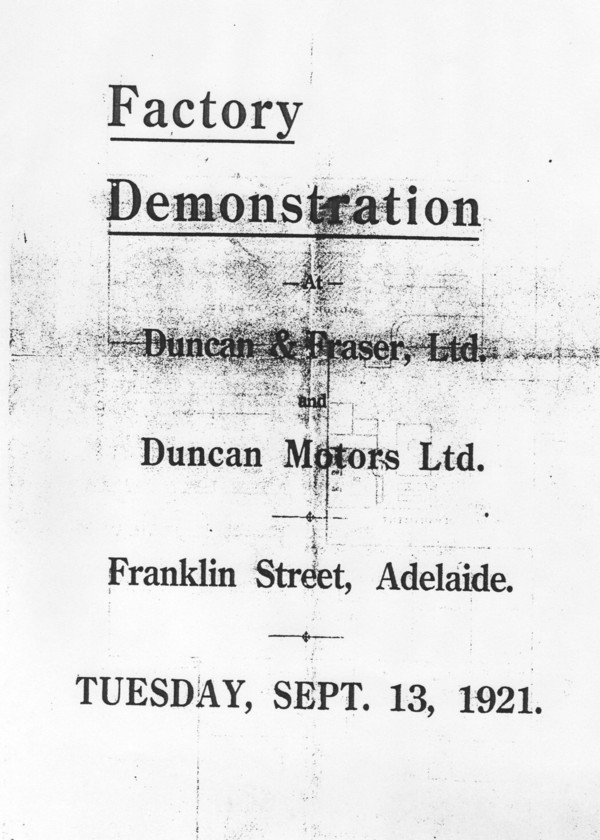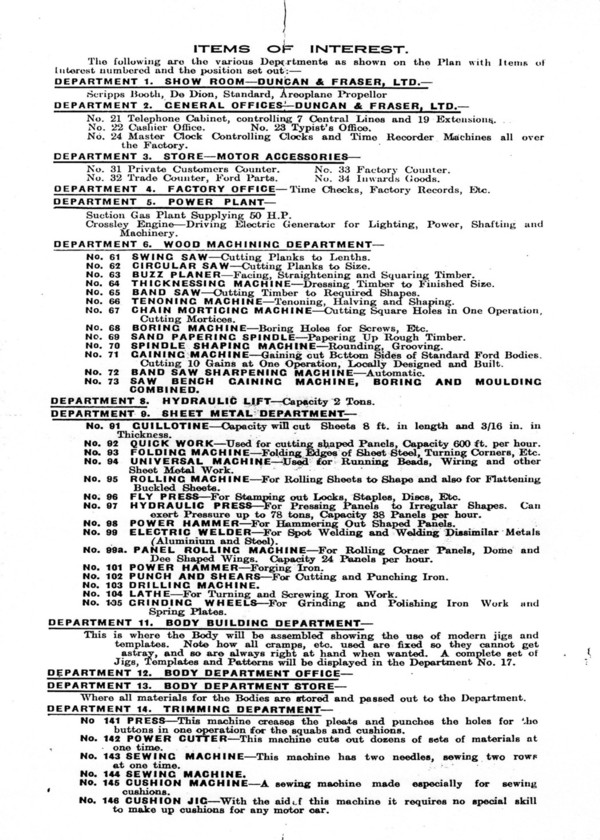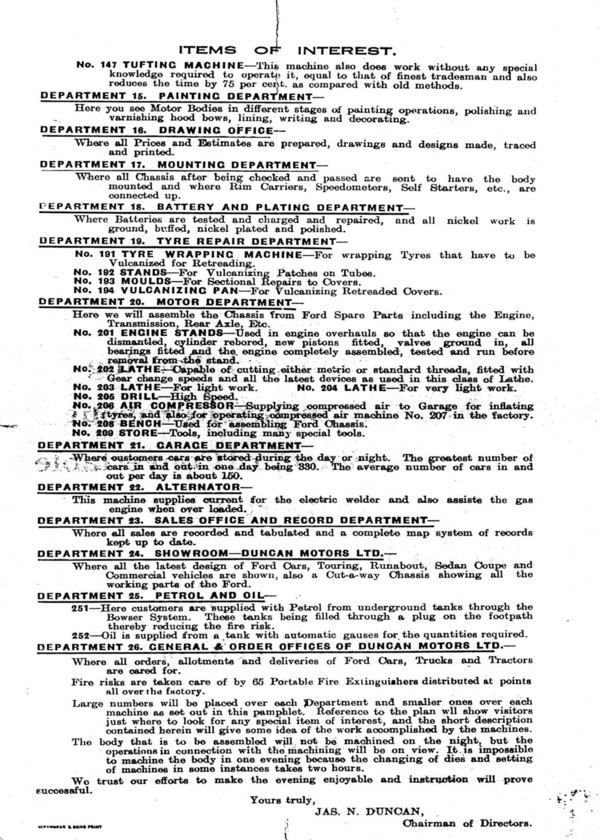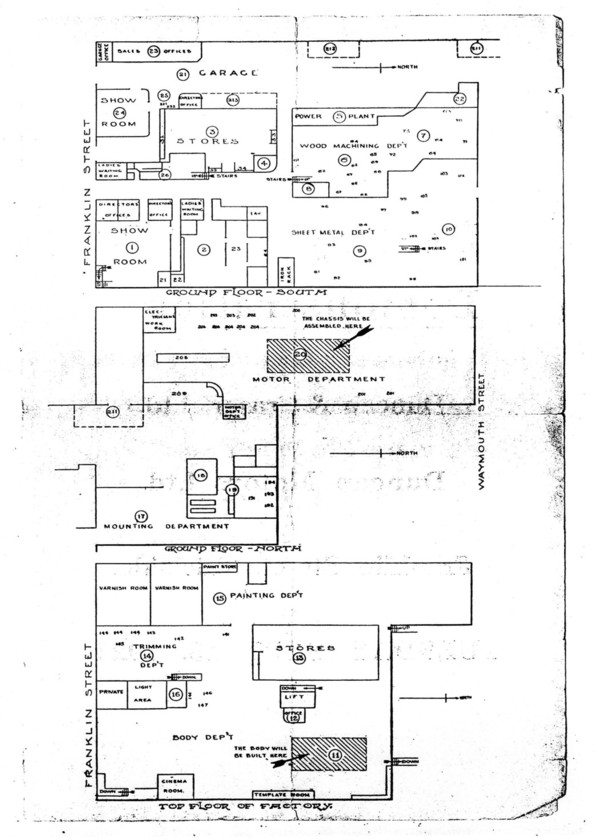Horse drawn wagons built for the AIF prior to shipping to France c1917. Photo courtesy of Ian Duncan Smith.
Right from the outset of the business
James Duncan and James Fraser put great emphasis in promoting the partnership
to the public. This theme continued until the company's closure; quality workmanship
presenting value for money whether it be horse drawn transport, tram cars
or motor car bodies.
On 9th September 1908, for the
first time Duncan & Fraser organised an "Open Night" to celebrate the electric
illumination of the factory. On display were motor cars, trams and buggies
in various stages of assembly. Part of the night's entertainment was the building
of a buggy from scratch. Over 2,000 people came through the Franklin Street
factory on the night and watched Alf Coyle, Richard Newell & Jack Thorogood
and other senior tradesmen perform their crafts. Commencing at 7pm a complete
"Abbot" buggy was built from raw materials to the finished article (excluding
paint) in 2 hours 48 minutes. The night proved to be an overwhelming success
and was the talk around Adelaide for many days after the event.
The "Abbot" buggy built on Wednesday 9th September 1908 in 2 hours 48 minutes. Photo courtesy of Ian Duncan Smith.
After the success of the first
public demonstration it was decided that it needed to be repeated. However,
it could not be done too often or the public may lose interest. By 1917 the war had been raging
in Europe for over 2½ years. All shipping had been confiscated for the
war effort and Duncan & Fraser Ltd. faced the continual shortage of new
cars and lorries to sell. The company needed to be careful as they needed
to advertise their wares and keep the company in the "public's mind",
but it also had to not promote the virtues of the Ford too much for fear
of failing to supply. It was a knife edge balance for the management team
at the time. Ford engine components laid out
ready including the crankshaft, cylinder head, pistons, clutch plates
and a Holley 'G' carburettor, even the transmission was in pieces
and assembled for the demonstration. Note the 1915 model
Ford in the background of the workshop. Photo courtesy of Ian Duncan
Smith.
Ford chassis components laid out
ready including front & rear cross members, front & rear springs,
front axle, petrol tank, exhaust pipe, muffler and even accessory
"Shell" 2 gallon petrol cans! It is interesting to note that even
the chassis was in pieces and riveted together for the demonstration.
Photo courtesy of Ian Duncan Smith.
Windscreen stanchions, side lights, leather hides, upholstery materials, horse hair, seat springs, cast hood mechanism and wheels in pieces ready to be assembled. Wood has been cut up and in piles ready for the coach builders. Note the buggies in the background ready for delivery even at this late stage in 1917. Photo courtesy of Ian Duncan Smith.
All of the parts needed to assemble a complete Ford rear end. Photo courtesy of Ian Duncan Smith.
The "press" photo of the completed
car still in the Duncan Family photo albums. The car,
a brass 1916 model was made from spare parts including
building the body and trim (except painting) in just 2 hours
32 minutes. It is interesting that Duncan & Fraser
chose to build a "deluxe" body reinforcing that the government's
"Embargo" banning imported car bodies was well and
truly having an impact. This "Spare Parts" car is
the only brass radiator"deluxe bodied Ford that I
have found with standard Ford mudguards. Note the
simplified hand made bonnet made without the side
hinges and only 7 vents instead of the customary 8
vents; again seen only on this car. It is apparent
that some "shortcuts" including the flat rear deck
were permitted for the demonstration. Photo courtesy
of Ian Duncan Smith.
The fourth demonstration was of
a different nature with no advertising gimmicks or
vehicles being assembled. It was used to promote the
new Duncan Motors Ltd. body released on 1st July 1921,
the management of Duncan & Fraser opened up the entire
factory for the public to see how these new bodies
were being made.
|
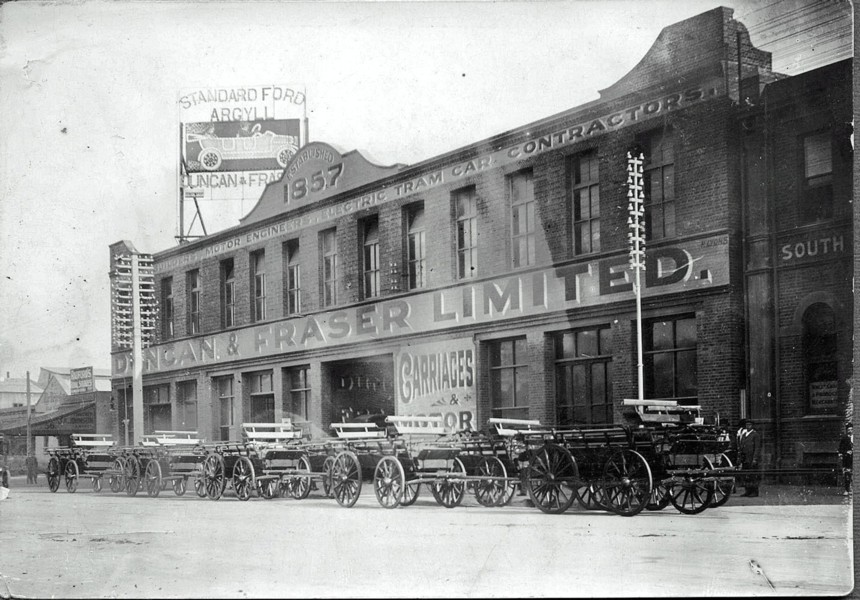
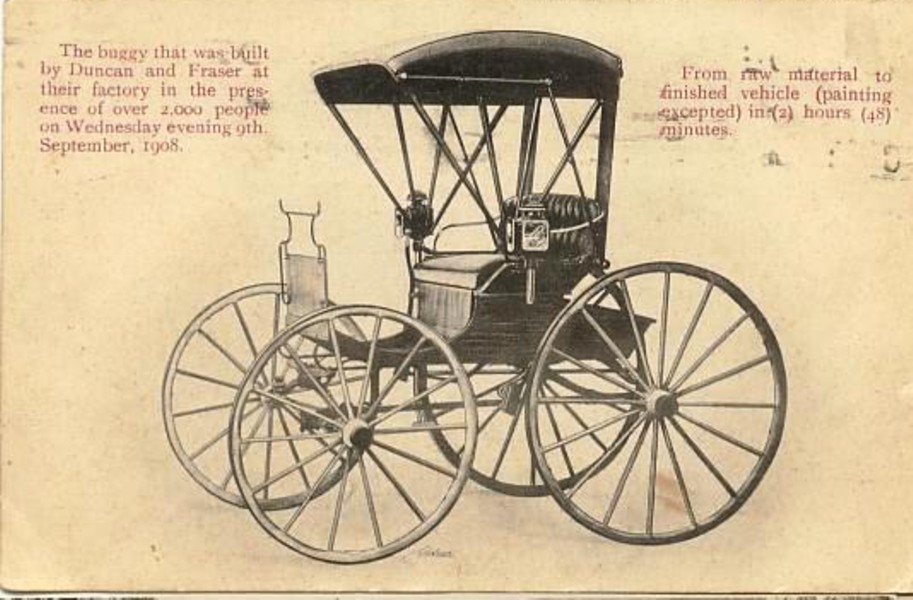
.jpg)
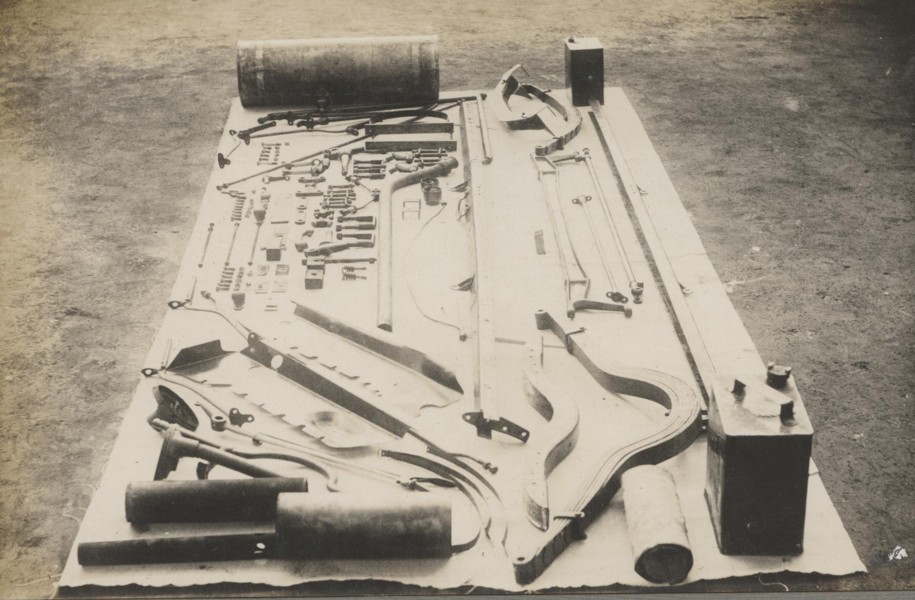
.jpg)
.jpg)
